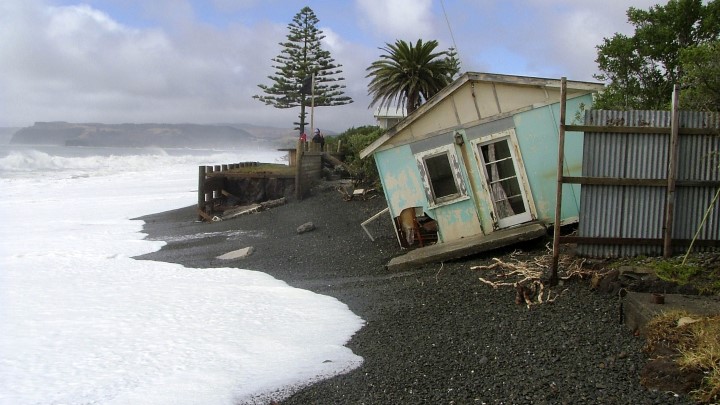The Government’s plan to adapt to rising sea levels, hotter temperatures and more extreme weather events is being described by experts as insufficient

We are going see the impacts of climate change on our communities and the way we live our lives, Climate Change Minister James Shaw says.
“It is absolutely crucial, therefore, that we do everything we can to adapt to these changes.
“We have already seen what can unfold. Severe weather events that had previously seemed unthinkable, even only a few years ago, are now happening at a pace and intensity we have never experienced before. And when they happen, everything from the roads we rely on, to our drains and water supplies, to getting the kids’ to school can be severely disrupted.”
The National Adaptation Plan will give New Zealand the tools to prepare for the consequences of climate change through a combination of community-based initiatives and national-level policies and legislation, Shaw says.
“We’re used to planning long-term for earthquakes. We have systems and regulations in place to manage those risks. We have information we need to be prepared. Now we’ll be taking that same approach to climate change.”
However Lincoln University Professor Anita Wreford says the plan lacks a baseline to measure adaptation.
“Understanding what adaptation is occurring and monitoring its effectiveness over time is a priority area of learning and future implementation. This is particularly important in areas such as the natural environment.
“I would also like to have seen more direction regarding the way decisions are made, and the tools used for making decisions, particularly acknowledging and accommodating the inherent uncertainty regarding future climate change.”
Massey University Professor Bruce Glavovic says there are five areas of the plan that need a sharper focus:
- Climate impacts will affect every aspect of life in Aotearoa New Zealand. The people hardest hit are invariably those who are more vulnerable. More focused attention needs to be centred on the root causes and drivers of vulnerability – and to actions that can be taken to reduce vulnerability and ultimately climate risk. This means addressing poverty, marginalisation, inequity and other structural causes of vulnerability.
- Local government will be fulcrum for enabling – or hampering – adaptation at the local level; for all. Transformational capability building from the political to operational level of local government is imperative. More focused attention needs to centre on building local government capabilities in partnership with tangata whenua, government, the private sector (which receives scant attention in this plan) and civil society.
- Introducing the concept of climate resilient development is a welcome and important framing. According to the IPCC, climate resilient development is the intertwining of mitigation and adaptation efforts to advance sustainable development, i.e., transformative equitable, just and environmentally sustainable development. There is work to be done to broaden the concept of climate resilient development as presented in the plan. Here it is reduced to climate resilient ‘property development’ – which is only one dimension of a multifaceted concept.
- The managed retreat imperative looms large with so many New Zealanders living along rivers and the shoreline. Enabling proactive retreat from imminent danger will only be achieved when government determines an equitable solution to the simple question: Who pays? The question of ‘Who Pays’ is a tough call. The plan does not provide an answer. But this question cannot be ducked if this plan is to be implemented.
- It is inevitable that there will be ‘winners’ and ‘losers’ in the ongoing struggle to adapt to a changing climate. More focused attention needs to be given to climate-driven conflict and to the establishment of institutional processes and capabilities that facilitate independent mediated negotiated solutions for inevitable climate conflict.
Waikato University Dr Luke Harrington says the plan lacks a focus on people.
“Yes, urban greening can help to mitigate the effects of extreme heat in cities, but this will only work alongside early warning systems, pop-up cooling centres which are free and easy to access, and monitoring plans which are tailored to our most vulnerable friends and whānau. Often it is the very old, the very young, and those with chronic health conditions who need targeted assistance when extreme weather events occur.”
He also says the plan gives poor advice to local councils in that it recommends they prioritise their scenario planning around a high emissions future (SSP5-8.5 or an RCP8.5).
“Such scenarios rely on extremely unrealistic assumptions, including that global coal use will increase by a factor of five through the twenty-first century.”








